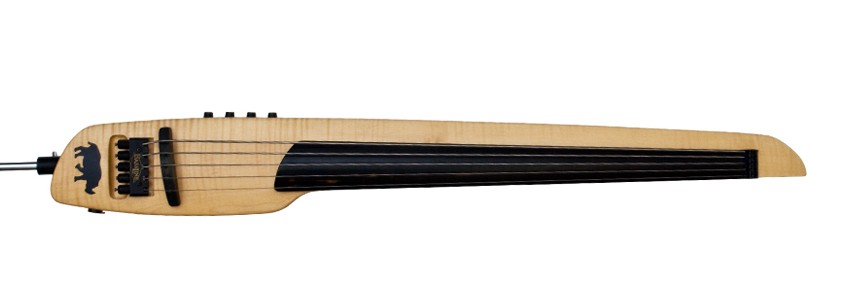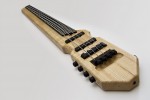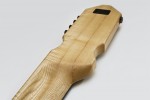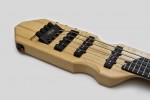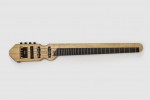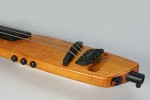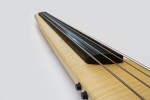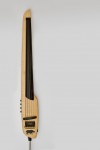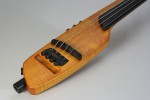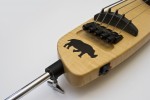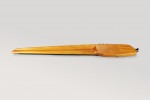The design of the “Universal” can be traced back to Ziesemann’s experience with a widened neck mass and the sustain of the bass chair of 1984 that comes with it (see History).
With the start of Bassline in 1993 there has been another universally usable and sounding model in the product range beside the model Buster. The „bass penal“ (Dirk Groll in G&B 5/94) “Universal” fills the gap between an Upright and an electrically amplified bass to hang around your shoulder because it can be placed on a stand as well as hung around your neck. The special neck profile with its channeling guide for the thumb on the back was patented in 1994 and has also later been used with the “Worp”.
„What the hell is that supposed to be?” (…) I call that a real development in bass making.” (Soundcheck / 10/1996, Jürgen Richter)
The Universal polarises as well as delights. The first “Standard” models impress by their fretless, heavily arched finger board made of ebony that are glued on a one-piece body made chiefly from ash. The flanks of the bodies between the two jazzbass pickups are left with a slight notch like a contrabass which – in combination with arched finger boards – makes using a bow possible. Parallel to that Ziesemann equips the Universal with flat finger boards and frets. These basses are also meant to hang around your shoulder.
„The delicate acoustic touch makes the Universal Standard interesting soundwise without taking away the flexibility and directness of an electric bass (…)”
A little later the “hang around the shoulder” function was abandoned while reconditioning the form of the Universal. The re-design of the Universal as a mere upright bass took place in 1997 with an overwhelming press feedback. “Compliments for the successful design” Fachblatt Musikmagazin (1/97) wrote about the one-piece bass made from flamed maple with a scale of 91 cm positioned on a snare stand. The Universal allows a maximum choice of natural and electrically enhanced basic sounds with its two different pickup systems. “(…) additional body mass in the neck region and the longer scale seem to make an impact. Due to the magnetic LeFay pickup the bass surprises with a solid sound that has a lot of body and definition. With the Piezo – blended in according to taste – the sound gets woodier.” (Fachblatt Musikmagazin 1/97)
„You wouldn’t believe how versatile the new generation of electric upright basses can be” (Bassist & Bass Techniques – UK, 2/97)
The Universal is equipped with an active 2-band electronic by Noll and is delivered with a body rest included, that makes it possible to lean the bass against the musician’s body like a contrabass. Included in the delivery is also a stand and a luxury gigbag.
Because of many requests the Universal is available not only as 4-string version but also with 5 or 6 strings. The Universal of 97 is available as an upright bass in a fretless version.
The fretless Universal of 93 has a flat fingerboard and is playable as “hang-around the schoulder”-bass and also as an upright bass. The fretted version of the Universal 93 is only playable as “hang-around-the shoulder” bass.
Universal Models
- ´93er Universal
- ´97er Universal
Instruments

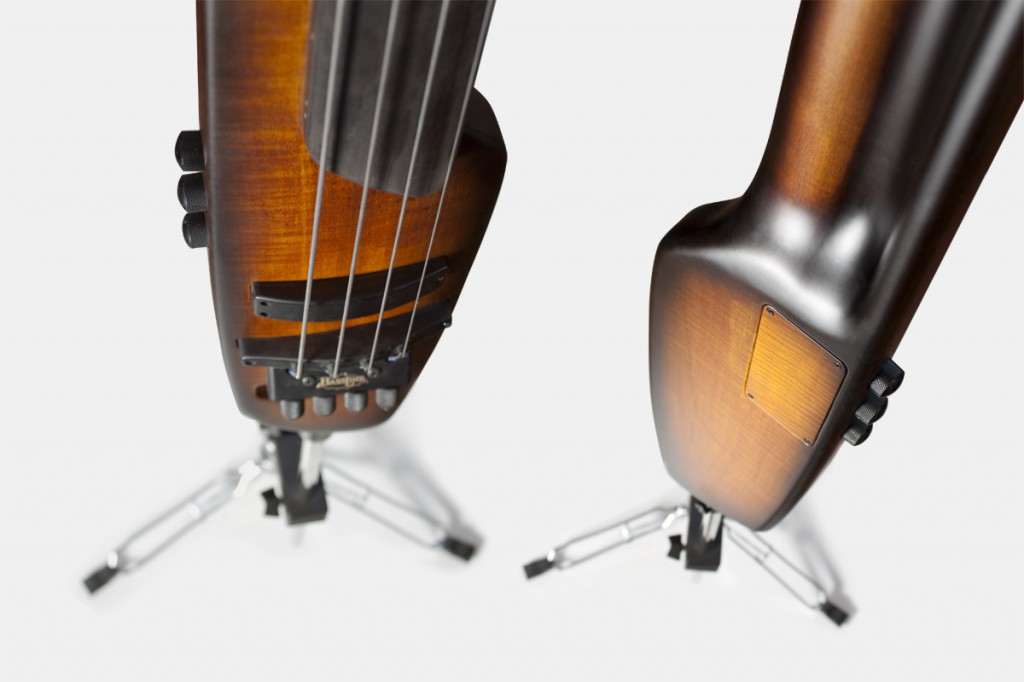
Soundfile 97s Universal, played by Stefan Rademacher:
Soudfile 90s Universal taken from the magazine „soundcheck“. 10.1996


